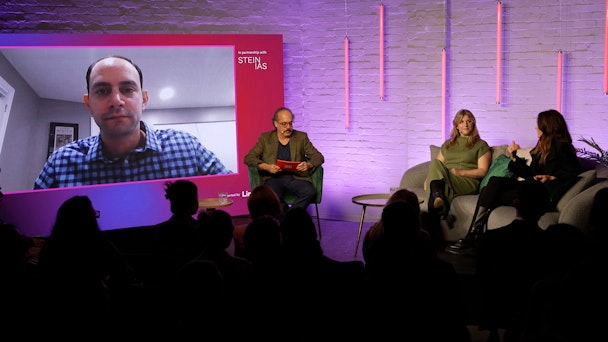Navigating the ‘upside down’: when B2C brands lean into B2B
Leaders from Uber for Business, The Kraft Heinz Company and Vodafone discuss how a B2C mindset can unlock B2B brand potential.

The upside down world: B2C goes B2B
Many global brands commonly thought of as business-to-consumer (B2C) are seeking and seeing growth by building the considerable business-to-business (B2B) parts of their enterprises.
While leaning into B2B has been a key growth engine for brands, it comes with its own set of challenges. At B2B World Fest, Tom Stein, chairman and chief brand officer at Stein IAS sat down with Victoria Kerr, head of marketing, EMEA & APAC, Uber for Business; Brandon Potter, head of brand marketing - Away From Home, The Kraft Heinz Company; and Anne Stilling, global director brand and media, Vodafone, to explore these challenges.
Ramping up B2B
Kraft Heinz is known around the world for its ketchup product, which is loved and trusted by consumers worldwide. But in the last few years, the company has been ramping up its B2B efforts targeting foodservice owners and operators. The strategy appears to be paying off: “We've been growing [in] food service for close to 10% annually,” says Kraft Heinz’s Potter. We're outpacing our peers in the industry considerably.”
Telecommunications company Vodafone is also focusing on B2B. Approximately a third of Vodafone’s business is B2B, according to Stilling. But in coming years, she says that B2B growth is set to outpace B2C growth.
Stilling used Amazon as an example of another brand leaning into the B2B opportunity, pointing to its Amazon’s Web Services (AWS) business, a significant revenue and profitability driver for the company. “The automation, the digitization that we see in companies is still relatively low,” Stilling explains. She suggests that this leaves the door open for tech companies to provide services designed to help other companies stay competitive.
Ride-hailing services brand Uber is also flexing its B2B muscle. According to Kerr, Uber’s ubiquitous brand equity brings its own set of benefits and challenges. “It opens doors for us and people know who we are. It’s not like you have to explain what Uber is,” she says. “The challenge that we hear from the sales team predominantly is that you're selling against yourself.”
Differentiating the value proposition
For many brands, one of the key challenges has been differentiating their value proposition between B2B and B2C markets while remaining cohesive. According to Stilling, Vodafone does this by positioning itself as a trusted, reliable and progressive expert. While individual products targeting the different markets may have its own value proposition, the overall business has a single brand strategy at the top level.
There is a solid case for focusing on B2B customers. Kerr explains these benefits for Uber: “Business customers tend to be higher quality, less churn, more trips,” she says. She adds that there is also an opportunity for the company to leverage ‘premiumization’ by allowing business customers to make reservations or request better vehicle types, for example.
Kerr points out that B2C businesses exploring B2B opportunities may face a number of challenges, such as educating internal stakeholders about the differences between B2B and B2C. This may involve outlining how sales cycles work, and explaining the more technical aspects of the business.
But at the crux of it, many of the rules that apply to B2C also apply to B2B. “In the end, the business decision taker is also a user,” says Stilling. “We don't talk to organizations. We talk to people.” She adds that many of the strategies that have been designed to appeal to consumers, such as increasing sustainability and inclusion, are also important for businesses. In fact, they can sometimes be even more important for businesses looking to meet targets.
To show the true power of B2B (in this case B2C2B) when done correctly, Potter refers to a recent Cannes Lions-winning Heinz campaign. This was designed to encourage ketchup lovers to leave a $1 “tip for Heinz” on their bill when dining out, to encourage restaurants to switch to the brand. “The power of the consumer voice is so much stronger than the power of our own sales force,” Potter explains. “We saw that in the change the campaign drove.”
Catch up on the full panel discussion at B2B World Fest 2023, here on The Drum TV.
Content created with:

Stein IAS
Stein IAS (www.steinias.com) are the B2B Originals, the first and leading global brand-to-demand agency for B2B enterprises worldwide. Stein IAS drives brand progression...
Find out more